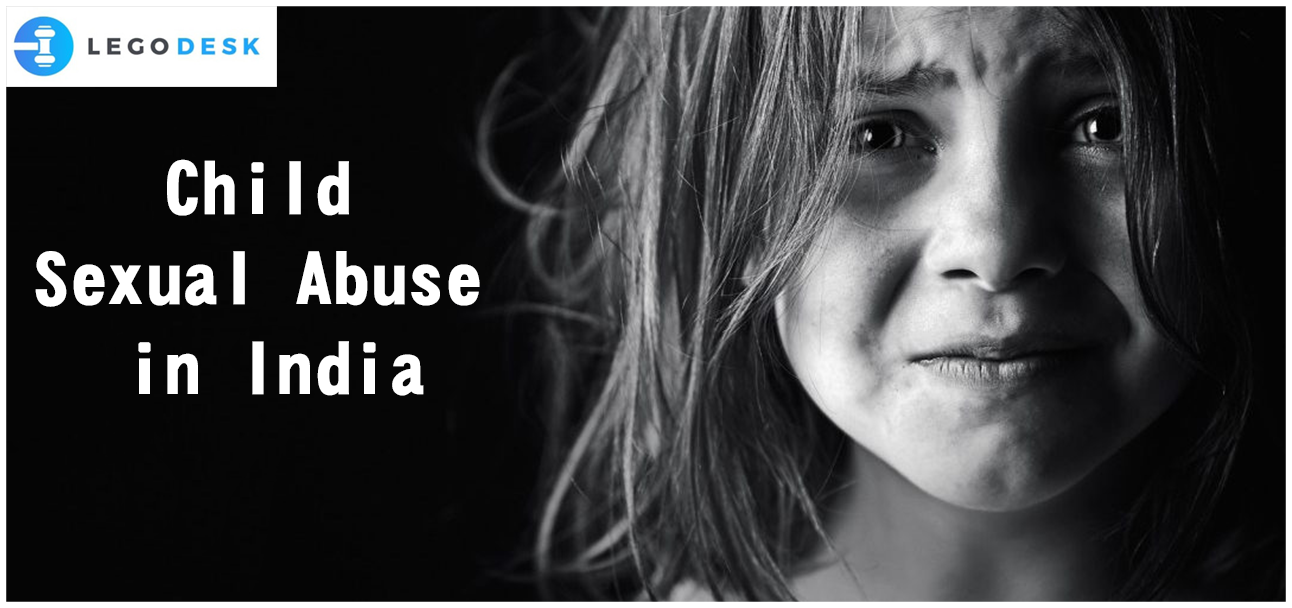
Child abuse is increasingly gaining attention due to the increase in the rate of crime towards children. India and many other parts of the world are constantly dealing with child abuse and in curbing the violence against children. Child abuse can be in various forms being physical, emotional, sexual, neglect and exploitation.
Children and adolescents are constant victims of sexual abuse, either by known members of the family or by strangers. Such cases which involve the involvement of family members often go unreported. There are many undesirable and unavoidable effects of such cases for which the children fall prey.
Child Sexual Abuse in India
As per the latest report of the National Crime Records Bureau, two most shocking revelation was made:
- India records the maximum number of cases of Child Sexual abuse even in a situation where all the cases of such abuse are not recorded.
- In India, every fifteen minutes, a child is abused sexually, which makes the count as four child victims every hour.[1]
Child Sexual Abuse can be defined as given by WHO
“The involvement of a child in sexual activity that he or she does not fully comprehend and is unable to give informed consent to, or for which the child is not developmentally prepared, or else that violate the laws or social taboos of society.”[2]
In a survey conducted in 2017 by the Humanitarian Aid organization World vision India, with more than 45,000 children participating from 26 states, it was revealed that one in every two children have been a victim of such abuse.[3]
Protection of Children from Sexual Offences Act, 2012
To decrease and penalize the act of child sexual abuse strictly Protection of Children from Sexual Offences Act, 2012 (Act 32 of 2012) was passed by the parliament and received Presidential Assent on 19th June 2012. Before this enactment, IPC covered all the offenses but there was no distinction between adult and child victims.
The Act defines a child as a person who is under the age of 18.[4] The act was passed to provide protection from sexual abuse to all children below the age of 18 years. In the case of Ms. Eera Through Dr. Manjula v. State (Govt. of NCT of Delhi)[5], the proposal was a consideration should be given to mental age of a person, however the same was not accepted by the court. The act is formulated and at all stages is determined to work for the best interest of the child.
Salient features of the Act:
- The aim of enacting this act is to protect the children and their rights.
- The act provides for special courts with the objective of speedy disposal of cases. (section 28). After taking cognizance, the trial for the offense shall be completed within a period of one year. (Section 35)
- The act is not gender-sensitive and there is no difference considered on the basis of gender.
- Types of offenses recognized and punishment:
- Penetrative Sexual Assault (Section 4): punished which imprisonment not less than seven years but may extend to imprisonment for life and fine.
- Aggravated penetrative Sexual Assault (Section 6): the convict may be punished with rigorous imprisonment of ten years extending to imprisonment for life and fine.
- Sexual Assault (Section 8): imprisonment may be between three years to five years and fine.
- Aggravated sexual assault (Section 10): this act may be punished with imprisonment not less than five years which may extend to seven years and fine.
- Sexual harassment (Section 12): punished with imprisonment which may extend up to three years and fine.
- The identity of any victim cannot be disclosed by the media as per section 23. Such an act is punishable with imprisonment for a term of six months and may extend to one year or with a fine.
- CWC (Child welfare Committees) are vested with the role of taking the decision of either keeping the child in an institution or with family within three days of the institution of the complaint.
- The proceeding of the trial under this act is conducted in camera with parents or any other person or child’s choice being present.
In the case of Shankar Kisanrao Khade v State of Maharashtra[6], the convict, in this case, has subjected the victim (a minor girl, 11 years) to murder after series of rape and was awarded death sentence by the Bombay High Court which was later reduced to rigorous imprisonment for life. While the trial for the case was going on the POSCO Act was passed. In this case, the judge reiterated the fact that our laws focus more on penalizing after the commission of the crime and there are fewer preventive measures. The focus should be the best interest of the child while deciding any of the matter of child abuse.
Conclusion
Child Sexual Abuse is often a phenomenon which family members prefer to keep it as a secret and which only results in more adverse effects on the child. Indian Law is penal in nature whereas it should provide for safeguarding and protecting the best interest of the child. The POSCO act makes it mandatory to report of an offense but the matter still goes unreported and unheard. Even after the enactment of the act, the number of cases did not decrease but repeatedly went up. Rehabilitation and prevention should be the focus.
[1] https://www.bbc.com/news/world-asia-india-42193533
[2] Guidelines for medico-legal care for victims of sexual violence; Geneva: World Health Organization
[3] https://www.hindustantimes.com/india-news/one-in-every-two-children-victim-of-sexual-abuse-says-survey/story-spc4MsZTJsmjyrlTZJep7L.html
[4] Section 2 of the POSCO Act
[5] S.L.P (Crl) Nos. 26402642 of 2016
[6] Criminal Appeal No. 362-363 of 2010

